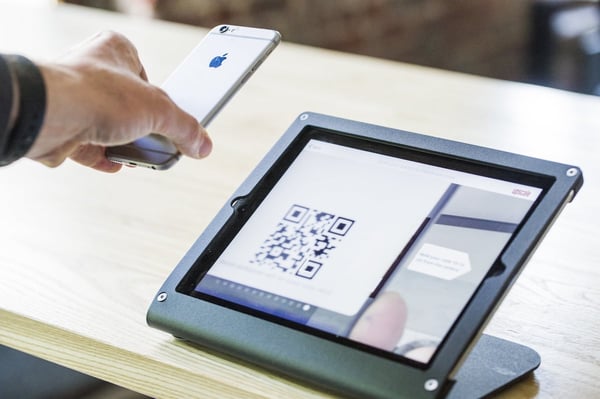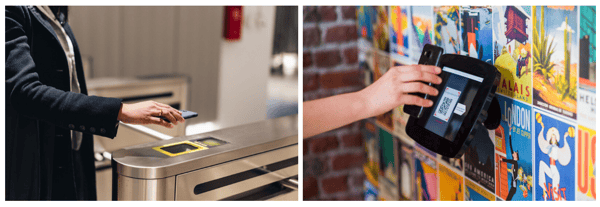After months of government-mandated quarantines and widespread commercial shutdowns in the face of the COVID-19 crisis, many organizations have since gotten the chance to re-open their doors.
However the spread of this pandemic still has no end in sight, and unfortunately, it seems that won’t be changing any time soon. This underscores the continued responsibility that all organizations carry to keep their visitors, customers, staff, and communities safe.
Empowering building access control systems
Thankfully, due to recent innovations in visitor management system (VMS) technology and the adaptive software integrations they can share with access control systems (ACS), there is some peace of mind organizations can provide guests.
That’s because VMS cloud-based integrations enhance an extensive range of core business processes in ways easily implemented into any forward-thinking company’s existing operations, supplying them with both stronger business performance and more assured ways of upholding their vital health responsibilities.
In fact, when considering the benefits that access control integrations provide alone (and ignoring the vast amount of other business-enhancing features that VMS offer), it’s no wonder so many COVID-19 facing companies choose to empower their VMS through access control system integrations.
The next level: Access control integrations with visitor management systems
When integrated with visitor management, the access control system raises the safety and security standards for everyone in the building, all while elevating the overall check-in experience for the visitor
To demonstrate what we mean, take a look at the integrative benefits that organizations gain when they pair their ACS with Proxyclick:
This visitor management solution is simple to integrate with the access control system, with any enhanced entry processes that are desired working with off-the-shelf hardware.
This means that any additions to the access control setup, if any changes are required at all, are simple to source, simple to design and cost-effective to deploy, by not being limited to one manufacturer.
But what’s more notable here is how Proxyclick pairs with multiple best-in-class system providers to supply a complete solution to meet the access security requirements of any organization it caters to.
On that note, some of the main features that come from those access control integrations include:
1. Synchronized visitor data with access control
With pre-registered profiles in place, integrated visitor management systems will have all the tools they need to appropriately recognize, greet, and cater to visitors the moment they arrive.
Administrative staff don’t need to manually add visitors - visitor data is pushed from the VMS to the ACS as soon as visits are created. Thus, admin can boost efficiency by avoiding tedious tasks like adding visitors twice.
2. Convenient QR access
In addition to automating the entry of visitors into the access control system, an integration with the right VMS also adds access credentials for visitors.
 By automatically emailing expected visitors unique QR codes before they arrive, guests are given the ability to conveniently scan themselves into a property. Visitor access permissions are highly configurable, with adjustable options for only permitting access during the visit or rendering QR codes void after visitors check-out.
By automatically emailing expected visitors unique QR codes before they arrive, guests are given the ability to conveniently scan themselves into a property. Visitor access permissions are highly configurable, with adjustable options for only permitting access during the visit or rendering QR codes void after visitors check-out.
The visitor’s overall experience is also quick and easy, as they’re granted access directly through the access control system upon arrival.
3. Live feeds of visitor access information
When integrated with a VMS, the access control system can track guests as well as employees as they enter and leave properties, giving organizations up-to-the-moment knowledge of every visitor they have at any given time.
Access can also be issued after visitors register remotely or after they use the lobby kiosk, so companies can engage properly with their visitors before they decide to give them access.
In addition, access control systems can update the status of the VMS by optionally checking visitors in or out when they go through certain doorways or turnstiles, keeping emergency lists accurate. Paired with streamlined VMS alerts, if an important update or emergency needs to be sent, companies can rest assured that every person who needs to be notified will be instantly.

Lastly, automated VMS data management tools record all of this important data at all times; just in case such information is ever needed in the future.
Applying access control integrations against COVID-19
Even with just a few advantages of access control integrations we’ve detailed above, it’s not too hard to see how these features might be used by organizations to keep people healthy and prevent the spread of COVID-19.
Here are some of the common ways they are making a difference today:
1. Fostering touchless visits
Avoiding unnecessary contact with any potentially contaminated surfaces during these times is an important precaution, and while it’s great that some businesses have set out hand sanitizer stations for guests to use when they do need to touch something, access control integrations will take things a few steps further.

For instance, the QR code capabilities of access control integrations can make it so that all guests need to put their hands on during a visit is their own mobile device.
Such access methods, combined with the removal of physical touch screens, the implementation of pre-visit email screenings, and the good use of automated doors can help properties provide a near-perfect touchless experience.
2. Limiting person-to-person contact
COVID-19 most commonly infects people who at some point have gotten too close together, which means that during this pandemic it is imperative unnecessarily large gatherings are avoided.
With destination dispatch, companies can avoid unnecessary crowds around multi-elevator installations and better manage the flow of people going to different floors. Assign one person to control and disinfect keypads, touch screens, or proximity cards to further limit surface touching.
3. Maintaining comprehensive activity and incident logs
It can take up to two weeks before someone sick with COVID-19 begins showing visible symptoms, though during all that time they remain highly contagious.
All meaning, when someone does test positive for the virus it becomes critical that anyone else who recently came in contact with them is alerted as soon as possible.
These tools allow organizations to easily recall detailed logs of everyone who was present when an infected individual was around. Since check-in and check-out information can be captured down to each moment an access point was used, the precise times and places where two people most likely came into contact can easily be discovered.
Lastly, with VMS alerts, everybody who may have been put at risk can be easily notified.
Looking further ahead
We still have a while to go yet before we’re past this global crisis, and everyone needs to do what they can to help bring these dangerous times to an end.
The access control integrations we talked about here today are undoubtedly a way to maximize a property’s anti-virus measures (and a great way to maximize a company’s business performance at the same time) though of course there’s always more that can be done.
Connect with our team here to learn more about Proxyclick's access control integration offerings.